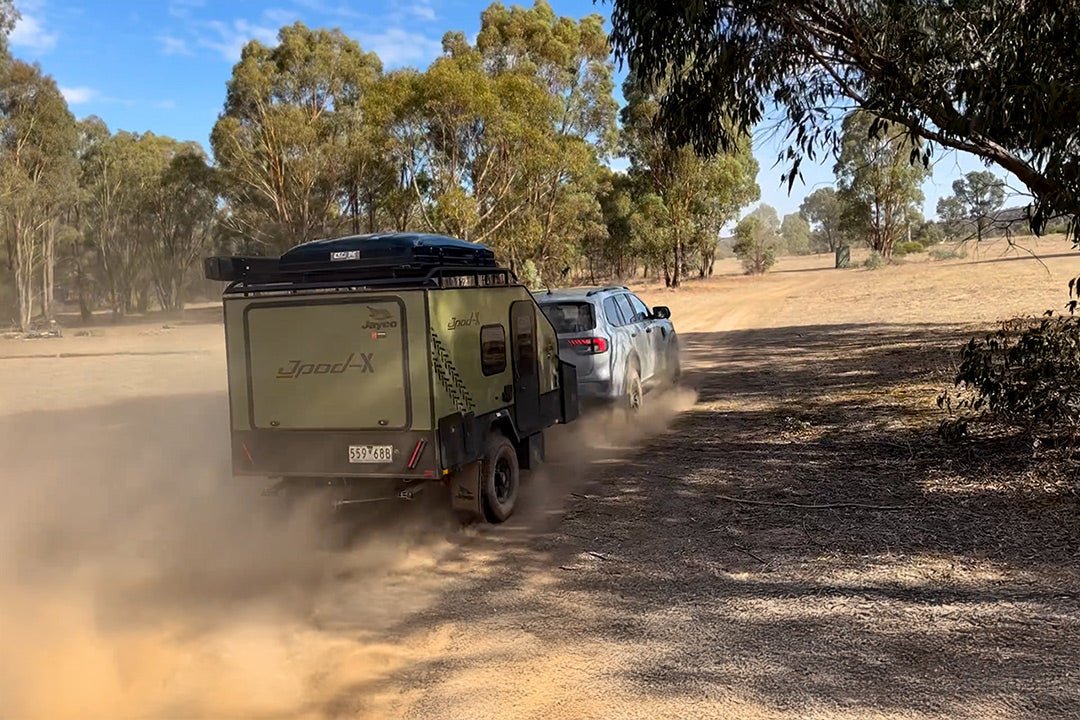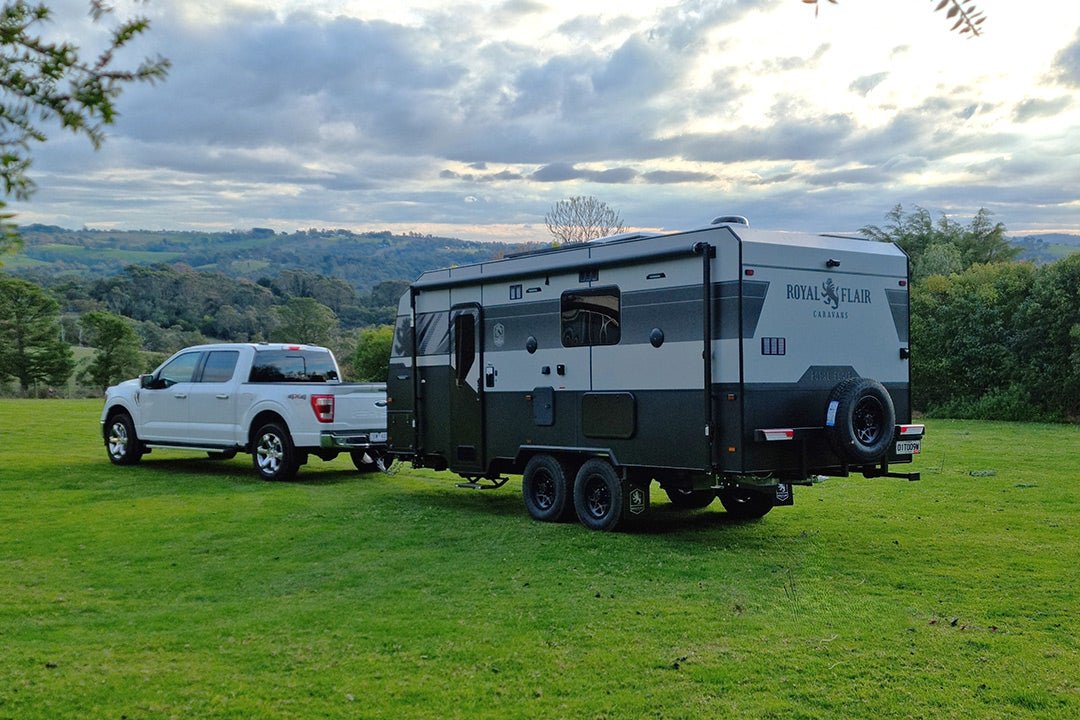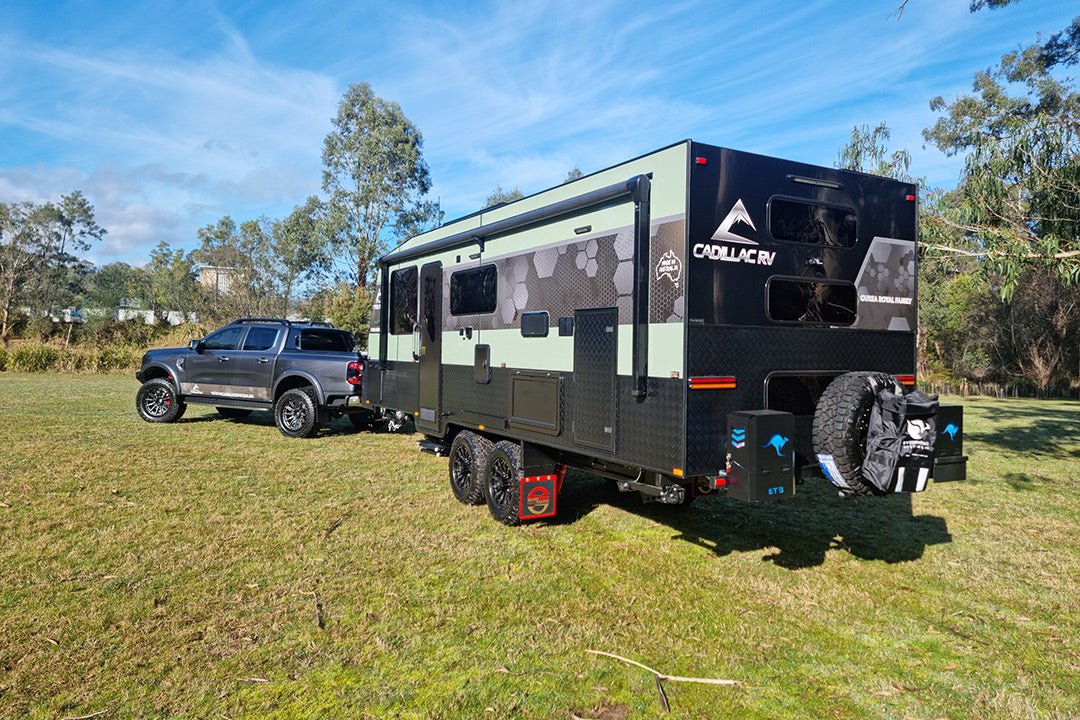Caravanning With Kids

So, you want to take the kids on a trip. Maybe it’s the grandkids, or the children from next door, but the offer has been made and you now face the realities of the situation. Where do they sleep? How will you entertain them? Can this be a safe, happy and enjoyable experience for all?
It seems simple and worthwhile — get them into the open air with lots of exercise, away from screens and the digital doldrums that must surely be eating away at their bodies and minds. Show them parts of this great land and the diverse people who live here. Take them to iconic places you saw as a young traveller, expand their horizons and stimulate their imaginations.
But it isn’t necessarily like this. Children today live in a very different world to that in which we grew up. The options in life and the things to fill it were much more limited in the days when pushbikes and scooters were king. Now there seems to be an endless range of entertainments to tap into. Kids can be immersed in virtual worlds of fantasy and adventure any time they like — the choices are limited only by your technology budget. Keeping them happy in the back seat of your car, around a campfire or even, amazingly, near a beach isn’t always easy, so you need to be forearmed.
FIRSTLY, WHY DO YOU WANT TO DO THIS?
There are costs — financial, physical and emotional — to touring with kids, so make sure all involved are going to have a positive experience. Side activities — fun parks, tours, etc — will cost money and teenagers will eat more food than you can hope to carry. If you just want some together time with the kids, that can be relatively simple. If you want them to have lasting life experiences and educational advancement then you will need to plan.
The latter will require some research into historical, social and natural history features of the destination(s). Younger children might be happy with doing scrapbooks (postcards, tourism leaflets, tickets, etc) of their trip, while older children might be encouraged to do some online reading, take specific tours or find answers to questions about where they’ve been.
PACKING
What to take is a vital component. Favourite toys (but not too many) can be important. Technology — phone, iPad, games console etc — will likely be significant for all children over five. These will require mains power, so that will mean a caravan park unless you have significant battery, inverter and solar capacity.
Fishing gear, snorkeling kit, boogie boards and bikes are all potential ‘necessities’ so you’ll need the appropriate room and gear to carry these.
Thongs, crocs, sturdy walking shoes, hats, water bottles, swimmers, rashie shirts, beach towels, beach shelter, sunscreen and cool weather and rain gear should all be on the list, as well as a good first aid kit, which at a minimum should include: antihistamine pills/cream; mosquito/fly repellent; a variety of band aids; antiseptic wipes or cream; tick removal tool; tweezers; small, medium and large sterile gauze bandages; triangular bandages; safety pins; scissors; disposable sterile gloves; and any prescription medicines necessary. If you’re going into a bushy area a snake bite kit might be a good idea as well.
A good list of entertainments (depending on age) includes: ball(s), water pistols, bubbles, chalk, binoculars, coloring books, magnifying glasses, card and board games, head torches and a bunch of glow sticks (helps you keep tabs on them at night). Where space allows pack items in clear tubs for ease of access.
Many children have clear eating preferences. Take your young charges’ desires seriously — frustrations over food could ruin your holiday. For teenagers especially, you’ll be lucky to be able to carry enough food, so make sure you have access to a store. If you aren’t the children’s parents consult with them before leaving to determine what is needed.
Also make sure you pack marshmallows and appropriate skewers if you’re planning on having campfires.
TECHNOLOGY
It’s probably worth admitting that completely severing links between your young charges and the digital world might well be a wrench too far, for both you and them. Allow that they’ll need/want time on devices and even if you don’t like it, accept that you’ll have no choice.
Internet connection will be needed for much of it, so be prepared. Most mobile phones will have a Personal Hotspot, which allows the phone to act as a data access point to the Net that can be used by adjacent appliances through wi-fi. Just remember that the data usage will count against what’s available on your phone plan. If you don’t know how this works almost any techy kid will, plus most caravan parks will have wi-fi.
TRANSPORT
Shifting your small charges around shouldn’t be difficult. Spare seats are usually available in all vehicles bar utes and traybacks, though leg room in many dual cabs defies the use of the back seat for more than small children.
Sit any who may be prone to car sickness on the outside seating positions. Ensure they have plenty to eat and drink and let them know in advance roughly how far you expect to be travelling on any single day. Try to avoid those 600–800km charges that modern cars are quite capable of and break the trip into several shorter journeys.
DESTINATION
If you are aiming for a serious touring trip where you will be stopping at a number of destinations, such as a trip to Cape York or Uluru, then your plans will be very different to a single port of call where you will spend a number of days/weeks before returning home. The former will be best handled by a number of shorter hops.
Your target destination for the latter option will determine what you will carry. A beach or river trip will definitely call for swimming gear, fishing rods and the like, while a trip to a bush site will require walking shoes, bikes and non-water-based items. In fact, you may find that bikes are pretty universal, as are glowing tent ropes and/or pegs (or put pool noodles on the ropes) so novices don’t trip at night.
If you’re going to stay at a caravan park, try to get one with a pool and recreational facilities as they can make a huge difference in the entertainment factor. Picking one within an hour or two’s drive of a theme park, movie complex, bowling alley or other entertainment is a good idea in case you strike a few days of rain.
ACTIVITIES
Before you reach your destination, you might need to rethink your attitude to suitable activities for children. Kids like a challenge, a touch of adrenaline and to feel they are in charge. That doesn’t mean you let them wrestle a snake, but give them enough leash to climb a tree, lead on a bushwalk or choose the direction of a day trip. You might be surprised at their sense of responsibility. This is all stuff that your own parents, and maybe even yourself, grew up with and can be the most educational part of a trip.
With supervision let them set and light a campfire if you’re in a suitable location and the conditions are right. Let them collect the firewood, again with supervision, as this is a potentially serious time to turn up a snake, and seek their involvement in setting up camp and packing up.
Take them snorkeling, one at a time if they’re younger and can swim confidently. Stage a nature-themed scavenger hunt, have a craft-based afternoon and decorate a bush walking stick or make a necklace. Take them to activities such as fishing or bushwalking individually, one of you with one child, then reverse the arrangement a few days later.
Kids will inevitably get dirty doing all this, so set up a hand and especially foot washing station near the van door.
Go to the local markets on the weekend or hire some paddle boards for a day. Get up early at least once to watch the sun rise and make sure you watch it set at least once. If you’re near the beach begin and end your trip with fish and chips eaten straight from the paper wrapping sitting on the grass behind the sand.
Most of all, enjoy your time away with your young guests, be they your own or your children’s children. If they’re having fun, you will too. Unless you’re on a year-long round-the-nation journey, the educational aspects are very much secondary, so don’t push it. These should be days for cementing relationships and making good memories.
ACCOMMODATING EVERYONE
The biggest decision for some will be where does everyone sleep? If you have a van with bunk beds it’s likely that you do this regularly. If you haven’t done it before, or have a small van, then this can be a bit of a juggle.
If you have bunk beds, unless the number of children exceeds the number of bunks your night-time accommodation worries are really non-existent. Most caravans will have the option to lower the dinette table or to bridge a gap between seats with an insert to create another bed. It can be fiddly to set up and pack away each day, but you can make it part of the adventure and for all but the smallest it can be part of their responsibilities.
For one or two smaller children there is always the option of sleeping on an inflatable mattress on the floor, as long as you can remember not to step on anyone if you have to get up in the night.
You may find that children in their mid-teens or older don’t want to sleep in the van and would prefer a little independence. This is going to call for a swag or small tent. This does present some security issues, but in most cases will be fine.
Check with the park management or other campers at your destination to see if there are any instances of anti-social night-time behaviour. If you’re worried about people or animals prowling at night you can set up a sensor activated light at the rear/side of your van or near the tent(s). Give the kids a hand-held two-way radio to call you if they become nervous. Remember this is Australia and unless you’re in far northern areas within a kilometre of the coast, creek or river that accesses the coast where you will need to be aware of saltwater crocs, there isn’t likely to be too much to worry about.
On cold nights snakes in some inland areas might like the idea of the warm inside of a tent, so make sure the tent is zipped up with the zip runners at the top.
Don’t forget the basics of tenting: don’t set up under a tree, don’t set up in a hollow (in case of rain), keep sleeping bags well insulated from the ground, place a tarp on the ground beneath the tent and peg your tent firmly to the ground.







